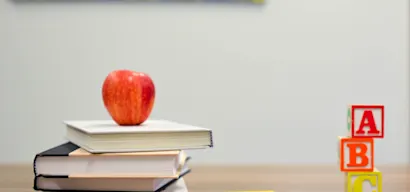Sprinklr.co is on a mission; turn homes and offices into little, green oases to make the concrete jungles we live in greener — one plant at a time.
We decided to pay Suzanne (Founder of Sprinklr) and Bow (Growth Hacker) a visit to have a chat about their startup. Along the way they taught us about a few of their personalization tactics and how they improved engagement using Unless.
Read on to find out how Sprinklr
- leverages dynamic, localized personalization to improve UX
- studies visitors’ search queries to learn what to personalize
- uses symmetric messaging to get the most out of paid traffic
And; what recommendations Sprinklr has for fellow Unless users.

Q: Personalization is all about tailoring your messaging to your audiences. Can you tell us a little more about Sprinklr and your target audience?
Suzanne: Our customers are young and urban. They live in cities — concrete jungles — where they want to surround themselves with green. They like plants that are trendy and in-style, sustainability is a big topic. The traditional world of garden centers doesn’t really cater to them. We try to fill this gap with our online-based offer of (mostly) organically grown plants.
A big part of our USP is our coaching app. It teaches users how to take care of their plants. If something goes wrong and the plant starts to wilt, the user can take a picture of it and our experts will give them tips on how to bring it back to life. Often, these users become our happiest customers.
Q: Speaking of customers. What is your most important acquisition channel?
Bow: That would be AdWords and social media advertising. Even though it’s not yet common to buy plants over the internet, people do their research online. We try to capitalize on that and paid search has proven to be a great way to attract customers.
Also, through studying users’ search queries we learn a lot about their needs and wants. For instance, search queries involving location are very common — for example “buy plants in Amsterdam”. We use this information to make our ad copy more relevant — great for our click rate. Of course, getting a visitor on your website is just the first step — to improve things from there onwards, we use Unless.
Q: Tell us a little more about how you use Unless?
B: To me, it’s all about relevance. If someone starts a search on Google and — among all the search results they could choose from — ends up clicking on my link, I believe I have a certain responsibility towards them. In a way, I’m their guide. It’s my job to show them relevant information and assist them in their decision-making process. With Unless, I can do that much better than before.
Q: Can you give us an example?
B: I mostly use Unless in combination with AdWords. As I mentioned before, search queries for “plant + user’s location”, have good CTRs. So, imagine you search for “buy plants in The Hague”. In that case, I would adjust the headline to make it crystal clear that Sprinklr delivers to The Hague — free of charge. It’s a small change but it’s crucial to my users’ page experience. I don’t want to send them on a website odyssey where they have to dig through the FAQ section just to make sure that yes, we do in fact deliver these plants to their doorstep in The Hague.
With Unless, I can add little nuggets of information without having to go through the trouble of creating new landing pages. I wouldn’t have the time to do that for every possible search query. Not to mention how difficult it would be to manage and maintain all these pages…
Q: So you mostly use Unless for symmetric messaging?
B: It’s certainly an important use case. In fact, it’s the first one I could think of when I started using Unless.
Creating symmetry between an ad and the associated landing page is a quick win. It reassures visitors that they’ve come to the right place. For example, for the ad “eco-friendly garden plants”, I’ll highlight that our plants are grown organically. For the ad “buy plants in Amsterdam”, I’ll emphasize our free home delivery. Both ads point to the same landing page — I just tweak it a bit. Those small changes can greatly increase engagement.
BTW: If you want to learn more about symmetric messaging, check out this blog post. Here we explain the benefits of symmetric messaging and how to implement it on your website.

Q: How do you measure the efficacy of your personalizations?
B: To me, the most important indicators are time-on-page, time-on-site, bounce rate, and conversion rate.
But there’s also the fact that Unless is a big time saver. In a startup, time is always a scarce good, especially the time of developers. With Unless, I only had to ask them to install the script. After, I could set up everything on my own. It just works without much hassle.
Q: What recommendation would you give to an Unless newbie? What should they personalize first?
B: Go for the low hanging fruits. In many cases, this will be symmetric messaging.
I myself set up my first campaign on a Monday — it took me a few minutes to adjust the landing page with the keywords of our most successful Adwords campaigns. After a week, I checked GA and saw a clear increase in time-on-site. That really motivated me to set up more personalizations and to find more use cases.
Also, the fact that you can get started without having to install a script first is a big advantage. As a marketer, you often ask developers to install a new tool, only to later realize that it doesn’t live up to its promise.
With Unless, I could play around with it, bring my first idea to life, present it to my colleagues and developers, and only after, we actually installed the script. Being able to show what I’m planning to do, made it a lot easier to convince people of the value of personalization.
Q: Speaking of which. What are your future personalization plans?
B: Just recently I have learned how to dynamically inject a user’s location into a page. Before, I set up one variation per city connected to single AdWords campaigns, now I know I only need one page and I can add a phrase like “free delivery in {{geo. city}}” — for any traffic source. I think that’s going to be a big win.
I also plan to experiment with images a bit. Content symmetry has proven to positively impact my metrics, I wonder what changing the visuals will do for my KPIs.
I think Unless is a tool that we will use for a long time. Even if I don’t set up new personalizations all the time, for me, it has proven to solve an issue. Now I can just let it run, let it do its work, while I dedicate my time to something else.
Q: And what are the future plans for Sprinklr?
S: Sprinklr is now focused on growth. First, growth within the Netherlands. And we’re making our first international steps. Our goal is to be the supplier of greens for people in big, European cities.
Q: Who are the people behind Sprinklr?
S: I have two co-founders. Mark Gallop, a developer with over 12 years of experience in backend and app development. Liedewij Loorbach, a plant-connaisseur with over 10 years of experience in journalism who published several books on plants. Then there’s me, Suzanne van Straaten with a background in marketing, logistics, and sustainability. Galina Bartelds, our operational manager, has also joined the team. And, we are supported by great freelancers; growth hacker Bow Evers, visual designer Mieke Lindeman, and UX designer Tee Tran.
Q: Tell us something people don’t know about Sprinklr.
S: That one of the first big fails at Sprinklr was leaving our first batch of banana-plants too long in the sun. Fail hard, fail fast definitely works for us. Now we take care of every plant exactly as we should — we learned this the hard way.
Thanks for reading!





